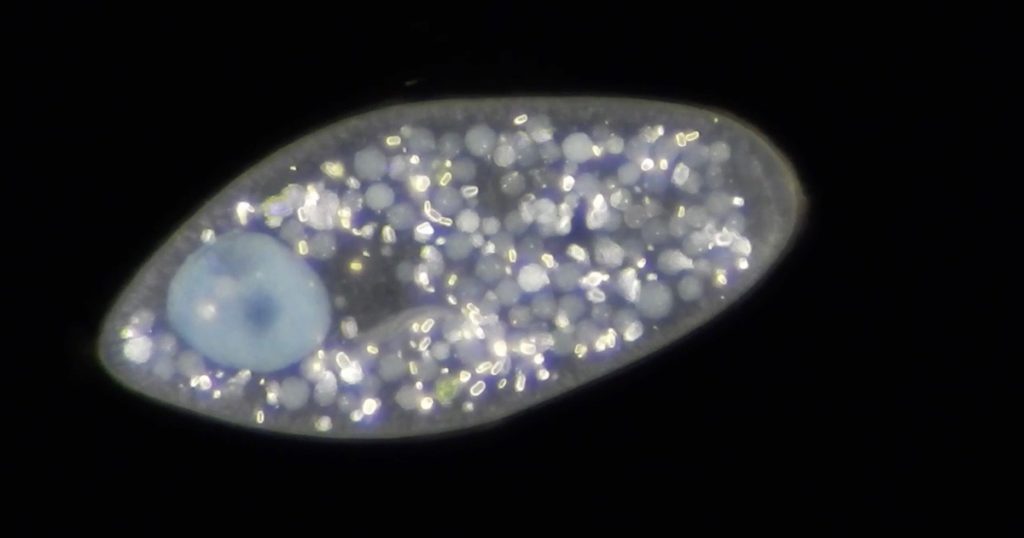 Intelligent Design
Intelligent Design
 Life Sciences
Life Sciences
Breakthroughs Unveil Evidence of Foresight in Nature

Editor’s note: We are delighted to present a series of excerpts from chapters in the recent book, Science and Faith in Dialogue, edited by Frederik van Niekerk and Nico Vorster. You can download a full copy of the book for free by going here.
Advances in multiple scientific disciplines have identified in nature evidence that a mind designed the laws of nature, our planetary system, and life. Nature demonstrates foresight where ingenious solutions were devised to confront problems and challenges related to sustaining and propagating life. Examples include the cell membrane, the genetic code, bacteria acting as ecosystem engineers, bird navigation, water and our planet. This evidence points not to life resulting from blind, undirected processes but to every aspect of nature being designed by an intelligent agent.
Biology is amid a gold rush of discovery. At my previous academic institution, the University of Campinas in São Paulo, Brazil, I ran the Thomson Mass Spectrometry Laboratory for 25 years. There, my team and I delved into many areas of chemistry, biochemistry, and medical science that until recently were still too new to have names — everything from proteomics, lipidomics, and mass spectrometry imaging to petroleomics and bacteria fingerprinting.
Breakthrough Technologies and Techniques
My research, along with my role as president of the Brazilian Mass Spectrometry Society and the International Mass Spectrometry Foundation, have brought me into contact with other leading researchers in Brazil and around the globe. And when we come together at conferences, the excitement is tremendous. Due to a cluster of breakthrough technologies and techniques, almost every week reveals some new wonder in the biological realm.
Some of these discoveries yield new medicines or medical techniques, such as the abundantly awarded cancer pen recently developed by my daughter, Livia Eberlin. Others give engineers new ideas for inventions in the burgeoning field of biomimetics. Still others have no immediate practical application; they are just revelations of beautiful biological ingenuity — scientific discovery for its own sake.
All of this new knowledge is exhilarating in its own right. At the same time, I am now convinced that many of these discoveries, taken together, point beyond themselves to something even more extraordinary. This new age of discovery is revealing a myriad of artful solutions to major engineering challenges, solutions that for all of us appear to require something that matter alone lacks. I will put this as plainly as I can: This rush of discovery seems to point beyond any purely blind evolutionary process to the workings of an attribute unique to minds — foresight!
And Yes, I Know
And yes, I know. We are told that it is out of bounds for science to go there. But regardless of where you ultimately land on the question of what conclusions science should or should not allow and whether or not you ultimately affirm that this gold rush of new evidence points to the workings of foresight, I urge you to inspect the evidence. Curiosity may have killed the cat, but it has done wonders for the scientific enterprise.
The many and ingenious examples uncovered in recent years are so numerous they could fill many large volumes. The pages that follow highlight only a small fraction of the total. But that fraction is filled with marvels. We will look at the cell membrane, the genetic code, bacteria that act as ecosystem engineers, avian navigation, water and our planet.
Life thrives in our diverse planetary environment, due in no small part to the many ways Earth is fine-tuned for life. But Earth can also be extremely hostile to life. The oxygen molecule (O2) is, for instance, essential to life, but only a life form that can efficiently wrap and transport the “devil” O2 exactly to a place where it can be used as an energy source would benefit from its angelic side. Otherwise, O2 becomes life’s greatest enemy.
Rupture the membrane of a living cell, exposing it to the air, and you will see the great damage O2 and a myriad of other chemical invaders can do to a perforated cell. Death would be swift and sure. From an engineering standpoint, then, it was essential that a way be found to protect the cell, life’s most basic unit. The solution was clever: the cell was surrounded by a strong chemical shield from the very beginning.
Read the rest by downloading a free copy of Science and Faith in Dialogue here.
